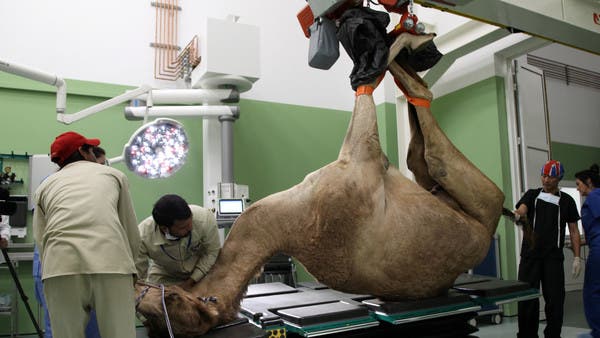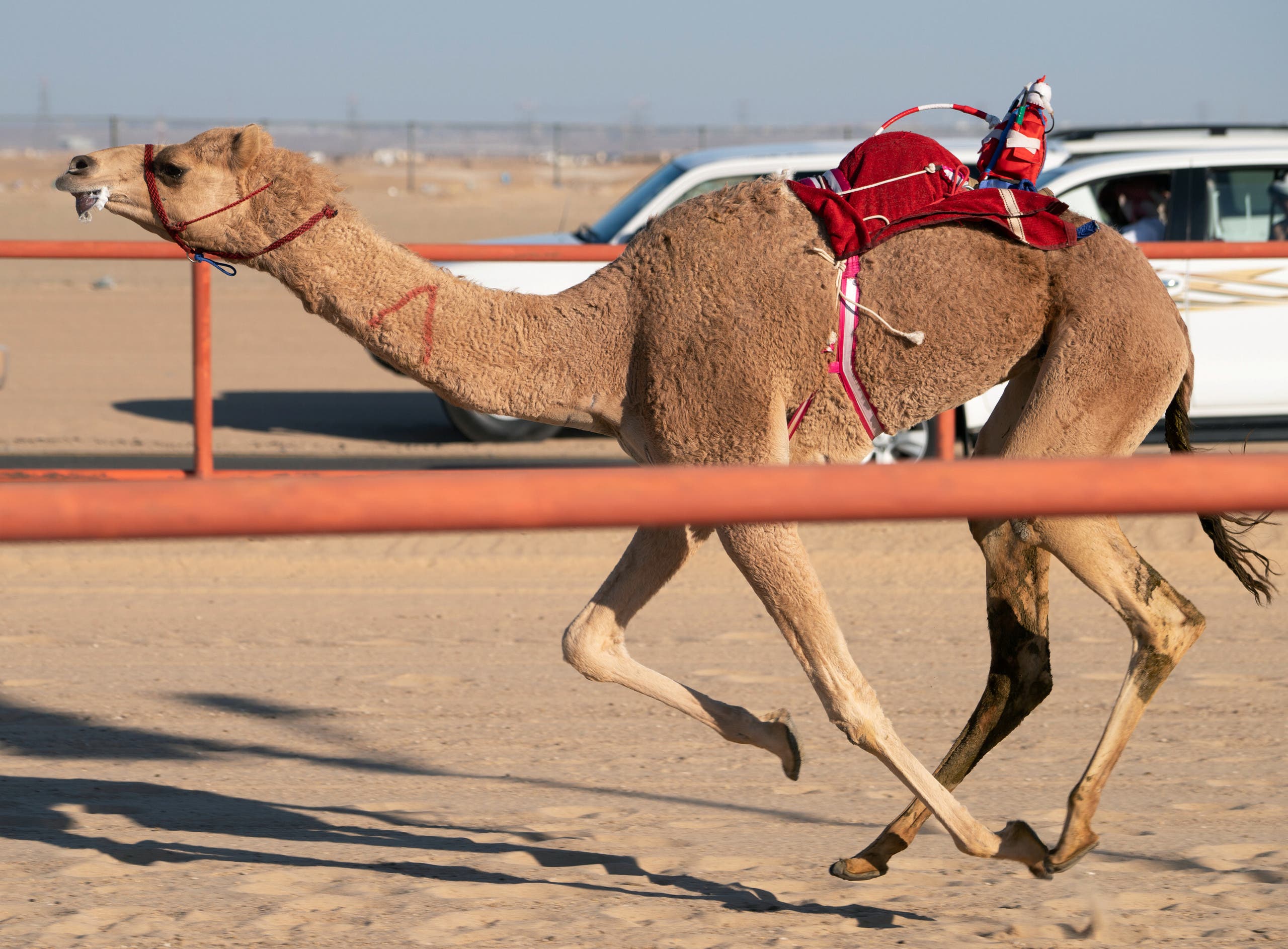A camel receives an injection before a foot surgery at the Dubai Camel Hospital in Dubai, UAE, December 11, 2017. (Reuters)Lauren Holtmeier, Al Arabiya EnglishWednesday 08 July 2020Text size AAA
The world’s largest camel treatment and research facility opened in Saudi Arabia’s Qassim Region, SPA reported Monday.
The more-than 100 million riyal ($26.7 million) facility is one of only a few in the world dedicated to camel care and spans 70,000 square meters, SPA reported.
Governor of Qassim Region Prince Dr. Faisal bin Mishaal bin Saud bin Abdulaziz inaugurated Salam Veterinary Group’s camel hospital and toured the facility upon its opening.
For all the latest headlines follow our Google News channel online or via the app.
In the region, camel hospitals are also found in Dubai and Qatar. The $10 million Dubai Camel Hospital (DCH) opened in December 2017 and was the second such center dedicated to camels in the region after Qatar opened a hospital and breeding center in 2015. DCH set to expand its capacity by 50 percent in 2019 to meet rising demand and the enlarged facilities would be able to treat more than 30 camels at once, Emirates 24/7 reported at the time.
A camel receives an injection before a foot surgery at the Dubai Camel Hospital in Dubai, UAE, December 11, 2017. (Reuters)
“In recent years, camel dairy farming has evolved as an alternative to traditional dairy farming in the region. According to a recent report by the IMARC Group, the GCC camel dairy market was worth $447.9 million in 2018 and is projected to reach over $661 million by 2024, rising by 6.9% during 2019-2024,” an Emirates 24/7 article read.

Camels in the region have been used for centuries for food, transportation and have historically been used as currency. But today, camels are bred for racing. There are records of camel races dating back to the seventh century, but the business has become more organized in recent decades. In the UAE, the former ruler of Abu Dhabi, and founding father of the UAE, Sheikh Zayed bin Sultan Al Nahyan oversaw the construction of several racetracks, the New York Times reported.
Read more:
Saudi Arabia will provide jobs for 1 million Saudi women by 2030
Saudi Arabia’s Riyadh Metro to be partially opened before end of year: Authorities
Camel festivals attract thousands of visitors to watch races where millions of dollars trade hands as buyers look for the most attractive camels.
In 2018, nearly 26,000 camels participated in the Camel Mazayen contest at Saudi Arabia’s month-long King Abdulaziz Camel Festival in Riyadh that crowns the most beautiful camel. Some owners even have plastic surgery performed on their animals, such as botox injected into the camel’s lips to make them appear fuller, but event organizers consider this inhumane, and do their best to monitor for such treatment of animals.
In 2011, there were an estimated 1.6 million camels in the Arabian Peninsula, with 53 percent found in Saudi Arabia, according to figures from the Food and Agricultural Organization. In the UAE, there are an estimated 300,000 camels.

A robot rides atop a camel during a camel race at the Kuwait Camel Race track in Kebd, Kuwait January 25, 2020. (Reuters)
For racing, human jockeys were once used, but as technology evolved and camel racers became aware of the dangers associated with riding, the switch was made to robots that now sit atop the camel as it runs.
Camels, like horses in the West, can go for a hefty sum for quality animals. Sale prices can range from $2,700 to around $815,000, the New York Times reported. Females tend to sell for more as they are faster, with CNN reporting that the Crown Prince of Dubai Sheikh Hamdan bin Mohammed paid $2.7 million for a female race camel at a beauty pageant.
